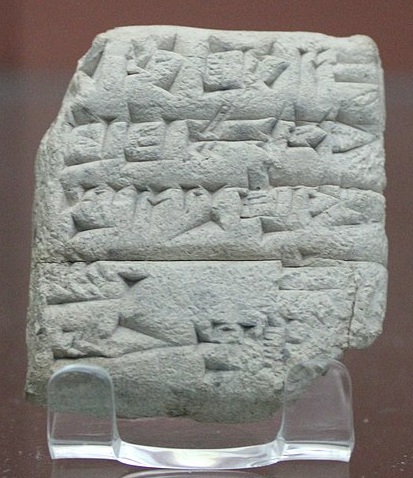
| IBIL-SIN / IL-IBILA / IBBI-SIN
Ibbi-Sin enthroned, with standing goddess
Ibbi-Sin (Sumerian: Di-bi-Dsuen), son of Shu-Sin, was king of Sumer and Akkad and last king of the Ur III dynasty, and reigned c. 2028–2004 BCE (Middle chronology) or possibly c. 1964–1940 BCE (Short chronology). During his reign, the Sumerian empire was attacked repeatedly by Amorites. As faith in Ibbi-Sin's leadership failed, Elam declared its independence and began to raid as well.
Ibbi-Sin ordered fortifications built at the important cities of Ur and Nippur, but these efforts were not enough to stop the raids or keep the empire unified. Cities throughout Ibbi-Sin's empire fell away from a king who could not protect them, notably Isin under the Amorite ruler Ishbi-Erra. Ibbi-Sin was, by the end of his kingship, left with only the city of Ur. In 1940 BCE, the Elamites, along with "tribesmen from the region of Shimashki in the Zagros Mountains" sacked Ur and took Ibbi-Sin captive; he was taken to the city of Elam where he was imprisoned and, at an unknown date, died.
Amorite
invasion :
Scholars have suggested that, by the reign of Ibbi-Sin, the empire was already in decline due to long-term drought – in fact, the same drought that helped to take down the Akkadian Empire c. 2193 BCE may have been responsible for the fall of Ur III.
Studies of Persian Gulf sediments indicate that the stream flow of the Tigris and Euphrates was very low around 2100–2000 BCE. [...] Any damage to the agricultural system by enemy raids, bureaucratic mismanagement, or an inattentive ruler would result in food shortages.
In years seven and eight of Ibbi-Sin's kingship, the price of grain increased to 60 times the norm, which means that the success of the Amorites in disrupting the Ur III empire is, at least in part, a product of attacks on the agricultural and irrigation systems.
Invasion
by Elam :
An, Enlil, Enki and Ninhursaja have decided its fate -- to overturn the divine powers of Sumer, to lock up the favourable reign in its home, to destroy the city, to destroy the house, to destroy the cattle-pen, to level the sheepfold; (...) that Shimashki and Elam, the enemy, should dwell in their place; that its shepherd, in his own palace, should be captured by the enemy, that Ibbi-Sin should be taken to the land Elam in fetters, that from Mount Zabu on the edge of the sea to the borders of Ancan, like a swallow that has flown from its house, he should never return to his city"
-
Lament for Sumer and Ur (extract).
- Main year names of the reign of Ibbi-Sin.
Inscriptions :
Ibbi-Sin cylinder seal, with Ibbi-Sin enthroned. Inscription: "Ibbi-Sin the strong king, king of Ur, King of the four quarters [of the world] // Ilum-bani the overseer, son of Ili-ukin [is] your servant"
Administrative tablet of the reign of Ibbi-Sin, Third Dynasty of Ur, 2026 BC
Votive bead dedicated to the Moon god by Ibbi-Sin, god-king of Ur, in recognition for saving his life: "To (the god) Nanna, his master, Ibbi-Sin, god of his country, strong king, king or Ur, king of the four regions, has, for his life, dedicated this bead"
Name of Ibbi-Sin in inscription and standard cuneiform
Receipt for garments sent by boat to Dilmun in the 1st year of Ibbi-Sin's rule. British Museum BM 130462
Source :
https://en.wikipedia.org/ |
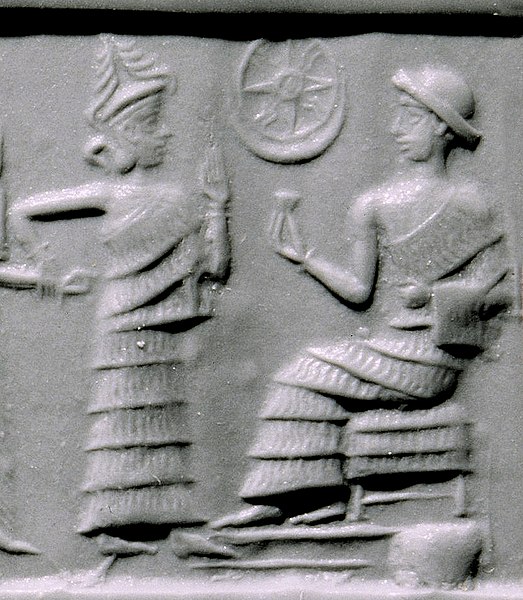
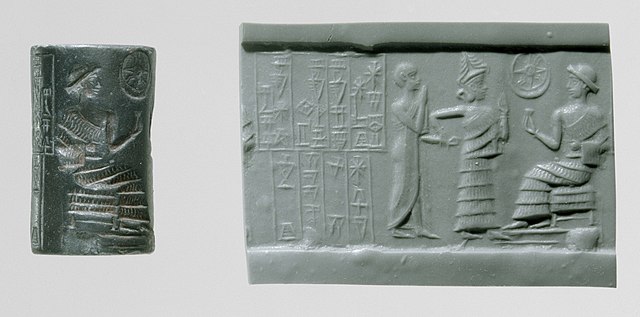
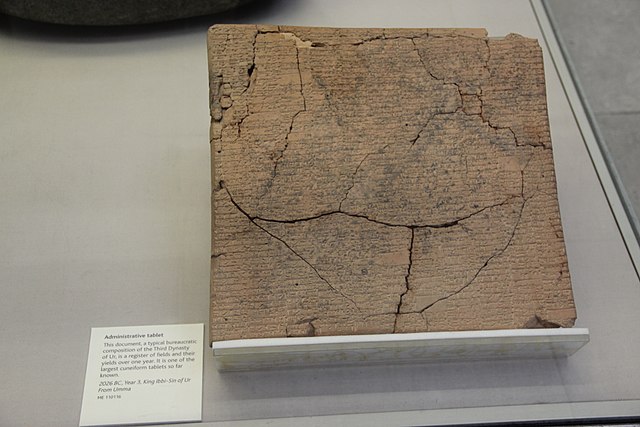
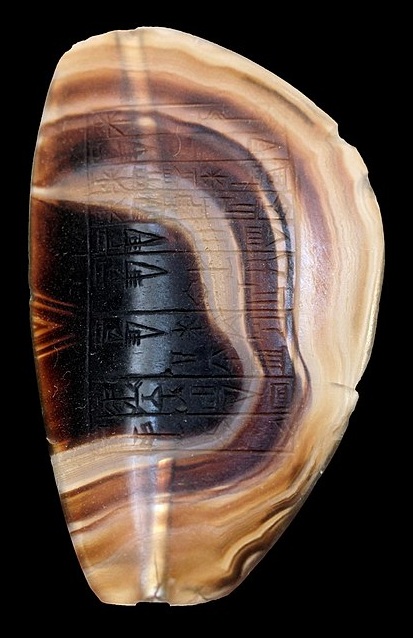
.jpg)
